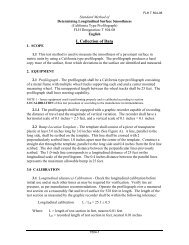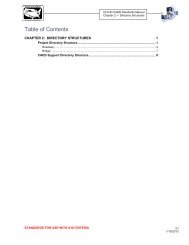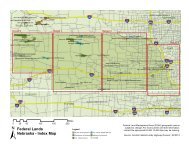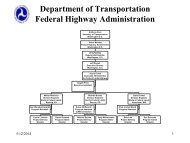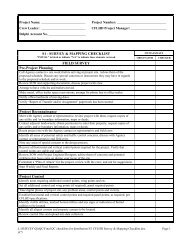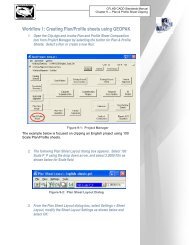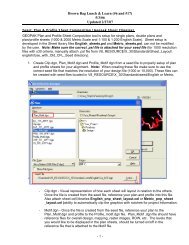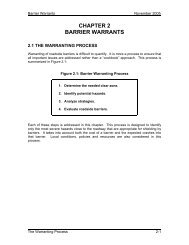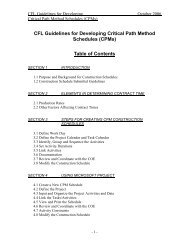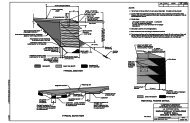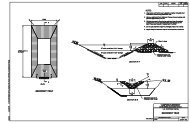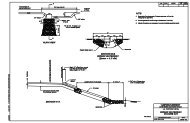55 CHAPTER 6 â PAVED AND UNPAVED ROAD SECTIONS This ...
55 CHAPTER 6 â PAVED AND UNPAVED ROAD SECTIONS This ...
55 CHAPTER 6 â PAVED AND UNPAVED ROAD SECTIONS This ...
Create successful ePaper yourself
Turn your PDF publications into a flip-book with our unique Google optimized e-Paper software.
<strong>CHAPTER</strong> 6 – <strong>PAVED</strong> <strong>AND</strong> UN<strong>PAVED</strong> <strong>ROAD</strong> <strong>SECTIONS</strong>expansive soils, most solutions appear to be regional or on a state-by-state basis. A moresystematic national effort and design methodologies is needed for wider application ofthis technology.GEOSYNTHETIC CLAY LINERSGeocomposite Clay Liners (GCLs) are manufactured by sandwiching or embeddingbentonite clay in geotextiles or attaching a layer of bentonite to geomembranes. As watercomes in contact with the bentonite, the bentonite expands, effectively reducing thehydraulic conductivity and creating a barrier to flow. For drainage ditches, the GCLcould be used to minimize seepage into the surrounding ground, and channeling the waterto a sump area for routing to storm water facilities. GCLs can also be a key componentin reducing contaminant transport from roadways into the surrounding environment,allowing non-point source contaminated run-off to be sent to a particular location fortreatment instead of making its way directly into sensitive areas.Summary of National GuidelinesGCLs are mentioned briefly in the “barriers” section of the NHI Geosynthetics manual(Holtz et al. 1998). In that section, their usage was described as waterproofing layers intunnels walls or bridge abutments, storm water retention pond or canal liners, andsecondary containment for underground storage tanks. It is also mentioned thatoverlapping is generally required to create a water-tight seal.Level of MaturityUnderdeveloped. While GCLs for environmental applications (such as landfills) arewell developed, the application to prevent seepage from ditches are virtually unused bythe FLH. Only one of eleven respondents in the survey in Chapter 3 reported usinggeosynthetic clay liners in any application. <strong>This</strong> may be partly due to unfamiliarity withthe material, concerns about long term performance, or a lack of more explicit guidancein design documents.Recent AdvancesBoardman and Daniel (1996) investigated the ability of clay liners to “self heal” overmany wetting and drying cycles in two geotextile-bentonite (GT-B) composites. Theynoted that one GT-B system developed large cracks in the bentonite when desiccated,which significantly increased hydraulic conductivity (from 10 -9 to 10 -3 cm/s or fromapproximately 10 -10 to 10 -4 in/s in this study) until the bentonite was rehydrated. In thistest, hydration took a little over an hour. The other GT-B system did not develop suchcracks during desiccation, an observation attributed to the higher reinforcement given bythe particular geotextile used in the product. Lin and Benson (2000) performed a similartest, adding a calcium chloride solution and more wetting-drying cycles. They, tooobserved significant cracking and loss of self-healing due to the chemical change in thebentonite and the loss of its ability to self heal.69



